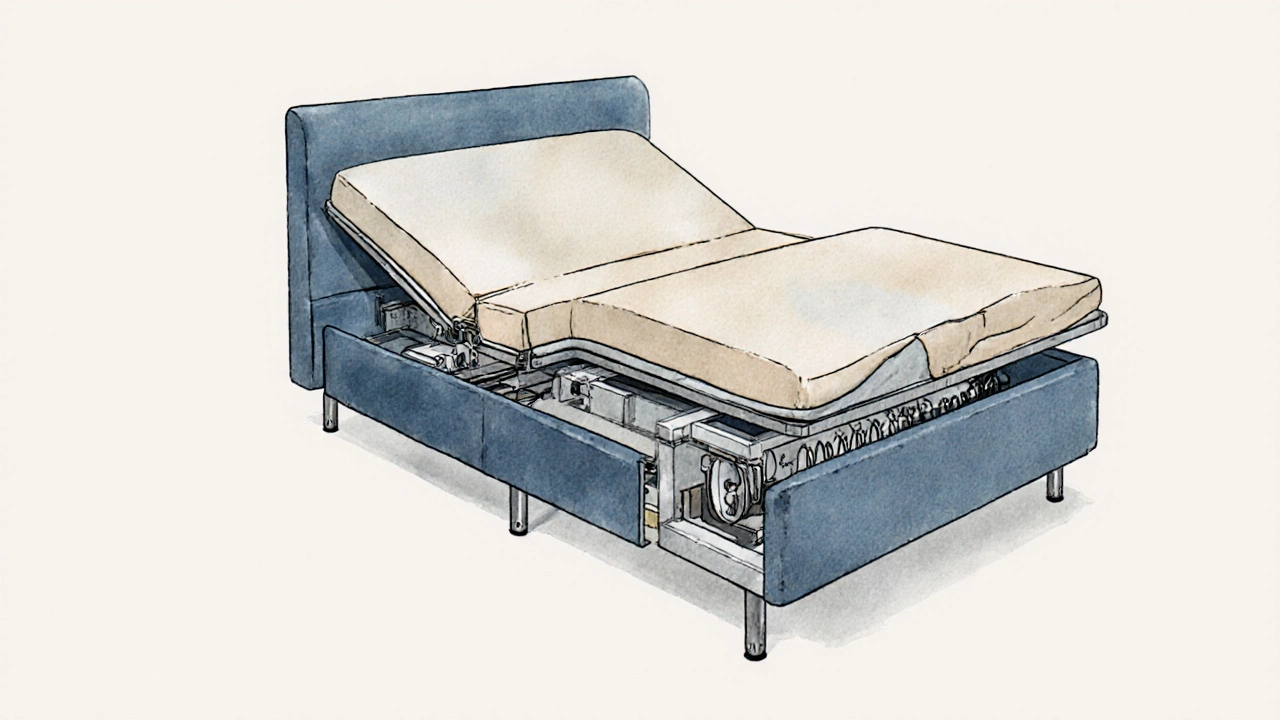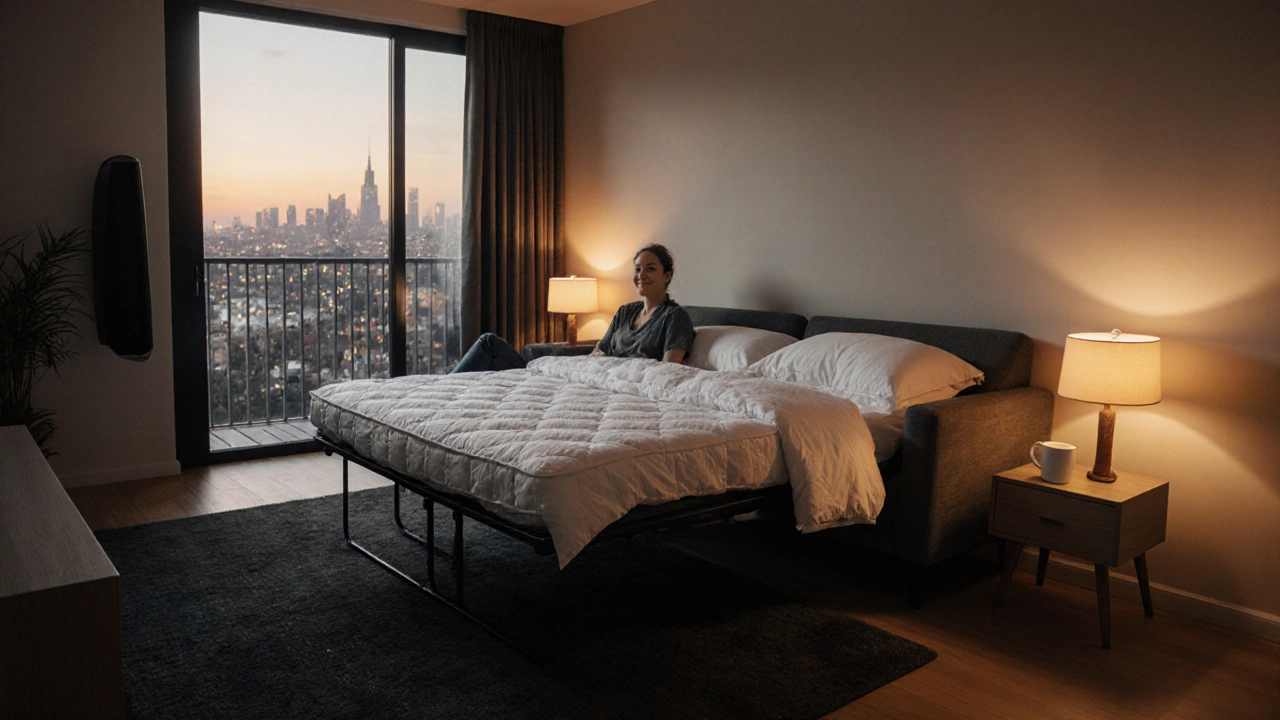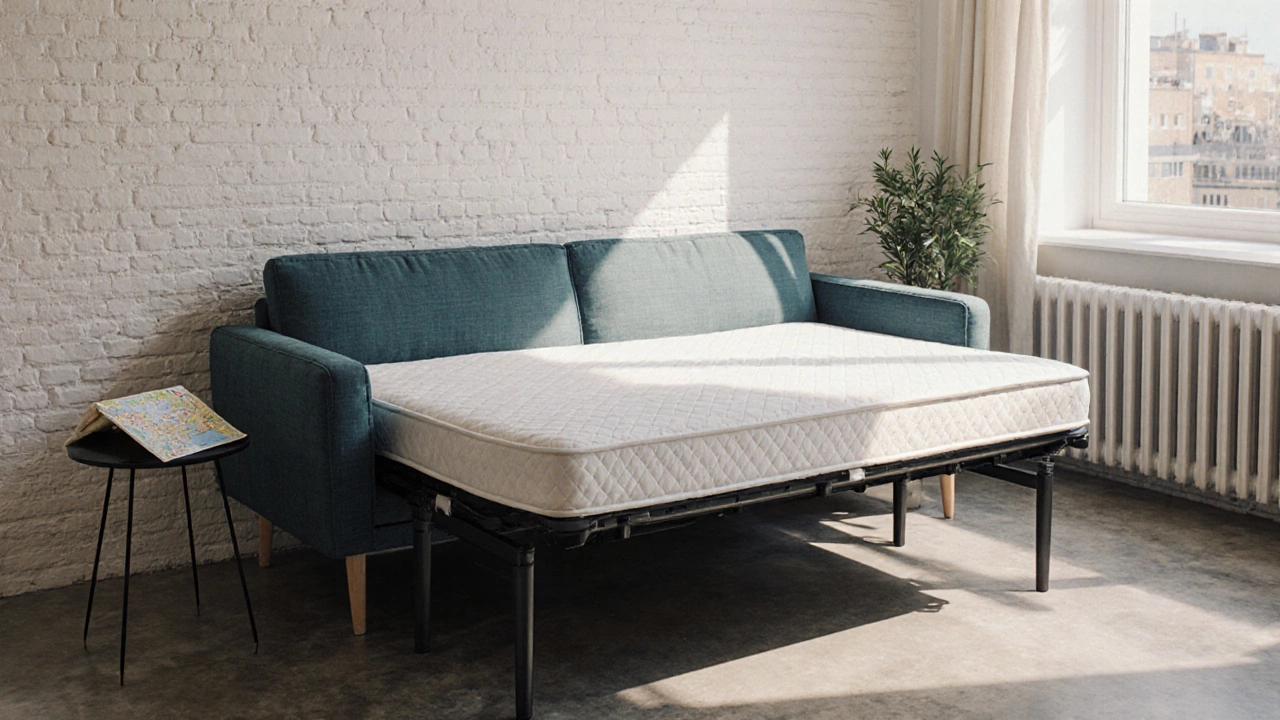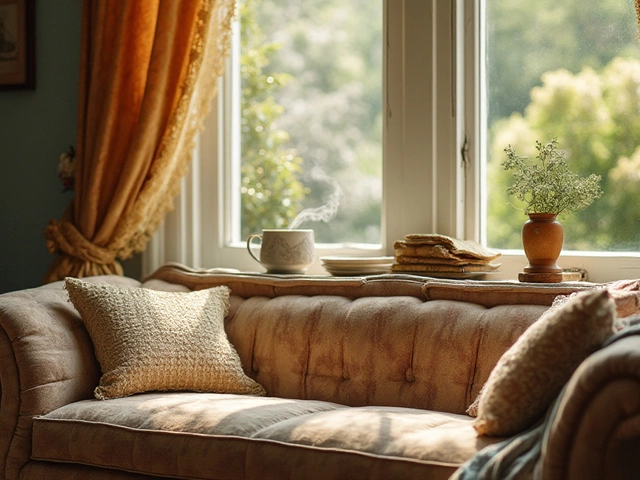Dutch Bed vs Other Space-Saving Beds Calculator
Select Your Preferences
Your Best Fit
Ever stared at a tiny London flat and wondered how to fit a guest bed without turning the living room into a bedroom? The answer might be a Dutch bed - a clever twist on the classic sofa bed that’s been sneaking into clever homes for decades. In this guide we’ll unpack what makes a Dutch bed different, where it fits best, and how to pick the right one for your space.
What Exactly Is a Dutch Bed?
Dutch bed is a type of sofa bed that folds horizontally rather than pulling a mattress straight out. Unlike a traditional pull‑out couch where the mattress slides forward, the Dutch bed’s mattress folds back and up, creating a flat sleeping surface that sits flush with the frame. The mechanism is often called a “click‑clack” or “fold‑out” system and was first popularised in the Netherlands in the early 20th century, hence the name.
How It Works: The Click‑Clack Mechanism
The secret sauce is the click‑clack mechanism. When you pull the seat forward, a series of hinges and tension springs release, allowing the backrest to fold down and the mattress to flip up into a horizontal position. The result is a solid, level platform with no gaps - a key advantage over many pull‑out sofas where the mattress can sag or shift.
Why Choose a Dutch Bed Over Other Space‑Saving Options?
Here’s a quick rundown of the most common alternatives and where the Dutch bed shines:
- Traditional sofa bed: Easy to find, but the mattress often slides out unevenly, leading to a lumpy sleep surface.
- Futon: Low profile and simple, yet offers minimal back support and can be uncomfortable for side sleepers.
- Murphy bed: Excellent for dedicated guest rooms, but requires a wall‑mounted cabinet and a lot of ceiling clearance.
- Daybed with trundle: Good for kids’ rooms, but the trundle adds height, making it less sleek for modern living rooms.
The Dutch bed balances comfort, aesthetics, and compactness. Its folded design means the overall footprint stays close to a regular sofa, and the mattress remains fully supported.
Key Features to Look For
When you start shopping, keep an eye on these attributes:
- Frame material - hardwood (oak, beech) offers durability; metal frames can be lighter but may squeak.
- Upholstery - breathable fabrics like linen or performance micro‑fibers resist stains; leather adds a luxe feel but can be pricey.
- Mattress type - foam (memory or high‑resilience) provides consistent support; pocket‑spring options give a more traditional feel.
- Weight capacity - most Dutch beds support 250-300 lb; check the spec if you regularly host heavier guests.
- Ease of conversion - the click‑clack should engage with one smooth motion; test it in‑store if possible.

Comparing Popular Dutch Bed Models (2025)
| Feature | Dutch Bed | Traditional Sofa Bed | Futon | Murphy Bed |
|---|---|---|---|---|
| Sleep surface quality | Level, fully supported | Often uneven, may sag | Firm but low back support | Full‑size, wall‑mounted |
| Footprint when closed | Similar to standard sofa | Slightly larger due to drawer | Low‑profile, sits close to floor | Requires wall space, taller |
| Conversion effort | One‑hand click‑clack | Pull‑out, may need two hands | Fold back, simple | Lift and lock, moderate effort |
| Typical price (USD) | $800‑$1,500 | $600‑$1,200 | $300‑$700 | $1,200‑$2,500 |
| Style versatility | Modern, mid‑century, classic | Wide range, but often bulky | Minimalist, casual | Built‑in, often bespoke |
Real‑World Scenarios: When a Dutch Bed Makes Sense
Urban studio apartments: You need a living area that doubles as a guest bedroom. The Dutch bed’s slim profile fits snugly against a wall without eating precious floor space.
Home offices: Kick‑back from a desk, then click the couch into a bed for an impromptu nap. The mechanism is quiet enough not to startle coworkers on a video call.
Small family homes: When relatives visit, you can tuck the Dutch bed into a lounge without rearranging furniture. After the night, it folds back, and the room looks normal again.
Installation & Maintenance Tips
Even the best Dutch bed benefits from a little care:
- Assemble on a flat surface; follow the manufacturer’s torque specifications to avoid loose hinges.
- Lubricate moving parts with a silicone spray once a year - it keeps the click‑clack smooth.
- Rotate the mattress every six months to prevent uneven wear.
- Spot‑clean upholstery with a gentle fabric cleaner; avoid soaking leather.
- Check weight limits periodically; springs can lose tension over time.

Buying Guide: Where to Find Quality Dutch Beds in 2025
If you’re based in the UK, outlets like Made.com, IKEA (their “Vimle” line now includes a Dutch‑style model), and specialist stores such as Furniture Village carry reputable options. Online marketplaces (Amazon, Wayfair) list a range of price points, but watch for customer reviews that mention “smooth conversion” and “solid mattress support”.
For the eco‑conscious shopper, look for FSC‑certified wood frames and organic linen upholstery. Some manufacturers even offer a recycled‑foam mattress that meets OEKO‑Tex standards.
Key Takeaways
- A Dutch bed is a sofa bed that folds the mattress back‑up, delivering a level sleeping surface.
- Its click‑clack mechanism makes conversion quick and quiet.
- Compared with traditional sofa beds, futons, and Murphy beds, the Dutch bed offers the best blend of comfort and compact footprint.
- When shopping, prioritize frame material, upholstery durability, mattress type, and weight capacity.
- Proper maintenance-lubricating hinges and rotating the mattress-keeps the bed performing for years.
Frequently Asked Questions
Is a Dutch bed the same as a pull‑out sofa?
No. A Dutch bed folds the mattress back‑up (click‑clack), while a pull‑out sofa slides the mattress forward, often leaving a gap between the mattress and frame.
Can I use a regular mattress on a Dutch bed?
Most Dutch beds come with a custom‑fit mattress designed for the folding mechanism. Using a thicker or firmer off‑the‑shelf mattress may interfere with the click‑clack action.
How much weight can a Dutch bed support?
Typical models support 250‑300 lb (113‑136 kg). Premium versions with reinforced frames can handle up to 350 lb.
Is assembly difficult?
Most Dutch beds arrive partially assembled with clear instructions. With basic tools, most users can complete it in under an hour.
What upholstery is best for pets?
Performance microfiber or tightly woven linen resists claws and hair. Leather is easy to wipe, but scratches can be an issue with larger dogs.
Whether you’re squeezed into a studio flat in Leeds or re‑imagining a guest‑friendly lounge, the Dutch bed offers a smart solution that doesn’t compromise on style or sleep quality. Armed with the facts above, you can confidently choose a model that fits your space, budget, and lifestyle.



